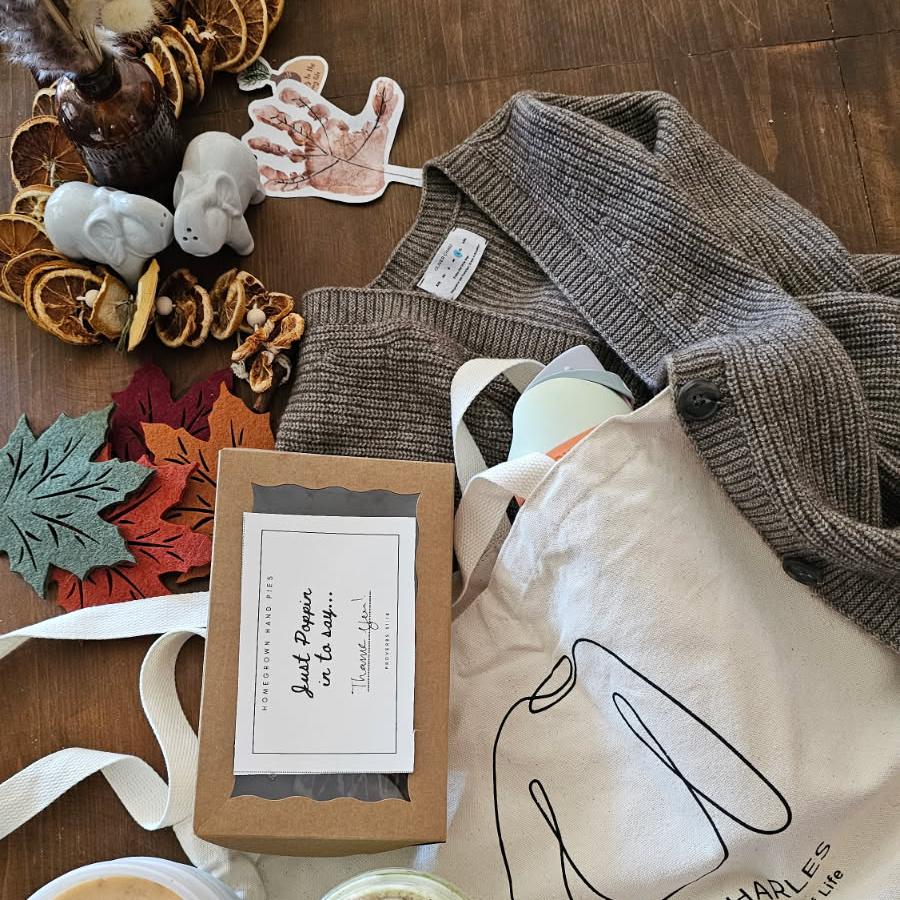3 Myths About Sustainable Materials
Separating fact from fiction so you can make smarter clothing choices.
May 16, 2024
By Mary Baucom
A New Yorker Wears The Same Sweater All Week Long
Welcome to the 2nd blog in my 3-part blog series about sustainable living in a big city - a love note of sorts to my Oliver Charles sweater and how it serves me well in NYC.
This blog concerns some myths others perceive about sustainable materials, particularly sustainable sweaters. Join me as I discuss and debunk some misconceptions about sustainable fashion choices.
----------
As a New Yorker working in publishing, my colleagues dress to impress. High-end designer brands are the norm. Being on trend is important. Vegan leather pants and oversized blazers are “in” for 2024, while loud colors and neon prints are “out.”
Now that we’re back in the office 3 days a week, I see the entire gamut of luxury brands and fast fashion alternatives. But what’s largely missing? Sustainably made, eco-friendly pieces.
What’s the reason for this? Well, one reason is that there are misconceptions about sustainable fashion. Some believe eco-friendly choices have as high price tags as coveted Louis Vuitton heels. Others wrongly think that all sustainable pieces aren’t necessarily work-appropriate, meaning they're meant for the trail and not the office.
Below, I’m debunking 3 misleading myths regarding sustainable fashion so you can make more informed decisions.

Myth #1: A Sustainable Sweater Isn’t Stylish
There was a time when sustainable fashion was mocked. Scratchy plaid cardigans and unflattering fits came to mind.
Thankfully, these memories are a thing of the past as brands like Oliver Charles have transformed what it means to create clothes that are better for the environment and stylish, too.
Due to a greater demand for sustainable clothing, brands have started using more planet-friendly materials such as merino wool, yak wool or even yarns made from seaweed.
These materials create higher-quality products that can stand the test of time. You'll want to reach for many of these timeless styles, such as well-made sweaters, repeatedly.
By purchasing these elevated basics, you are ensuring you’ll find ways to dress them up or down, depending on your mood or the occasion. A v-neck sweater, for instance, looks dress as great on its own as it does paired with a classic blazer and a pair of tailored jeans.

Myth #2: Sustainable Clothes Are Not Worth The Cost
Will sustainable fashion be on par with buying a trendy article from a big box mainstream warehouse? No. But, in the long term, buying sustainable pieces will benefit your wallet as they will stand the test of time. Fast fashion pieces are commonly thrown away after one season, and most of these pieces end up in landfills or are made from microplastic leaching materials.
These synthetic fabrics and fibers were invented for mass-production of cheap clothing. As a result, the trendy top we'd buy on a whim for an occasion last summer will likely find itself contributing to our global waste problems before the year ends.
So, while sustainable clothing costs more upfront, you will save over time. Your dollar is going towards supporting smaller businesses dedicated to investing in local communities rather than larger corporations that are more worried about churning out products than they are about how they are potentially hurting the planet.
Oliver Charles sweaters, for instance, are 3D-knit on-demand in Brooklyn, NY. USA-made with natural materials is as close as you can get to supporting slow fashion.
The higher cost considers the natural and organic materials, innovative technology, and fair trade standards. And wouldn’t you rather invest in these morals than a business promoting poor quality and potentially bad working conditions? I know I’m on board.

Myth #3: Sustainable Isn’t Attainable or Practical
Sustainable options used to only be attainable in rugged mountain stores. Thanks to something called the internet, however, buying sustainable clothes is easier than ever.
That said, it’s important to research before adding anything to your digital shopping cart. Seek out companies that clearly state their missions, including how their products are manufactured. The “About” section on most sites, including the Oliver Charles site, is a good place to start.
Also, check out customer reviews to get an authentic sense of the quality of the goods. Many consumers don’t hold back, so you know that a 5-star review is really worth its weight in gold.
When you come across and fall in love with a sustainable brand, spread the word! Don’t be shy to share your findings on your social media feeds or talk up the brand with your family and friends.
Better yet, gift your loved ones a piece of clothing or buy them a gift card from your newfound company of choice. Not only are you supporting the brand, but you’re also doing your part in supporting sustainable fashion.
Mary Baucom is a NYC-based marketer at Hearst Magazines with a passion for sustainable, healthy living. She moved to NYC three years ago after spending seven years in San Francisco. Living on the West Coast, she found yoga and meditation and learned the importance of self-care and prioritizing her mental well-being.
If you believe that every good wardrobe starts with owning less and owning better, consider buying yourself an OLIVER CHARLES sweater.
Shop NowPacking A Capsule Wardrobe For Travel
Testing the packability of the Oliver Charles All-Season Quarter Zip.
Read moreA Perfect Fall Day In My 100% Yak Wool Cardigan
The sweater’s pockets were perfect for storing dog treats on my walk, making me new furry friends.
Read more7 Day Challenge: One Yak Wool Vest Simplified My Entire Week
An honest review of the Cardigan Vest from a busy and pregnant toddler mom.
Read more



